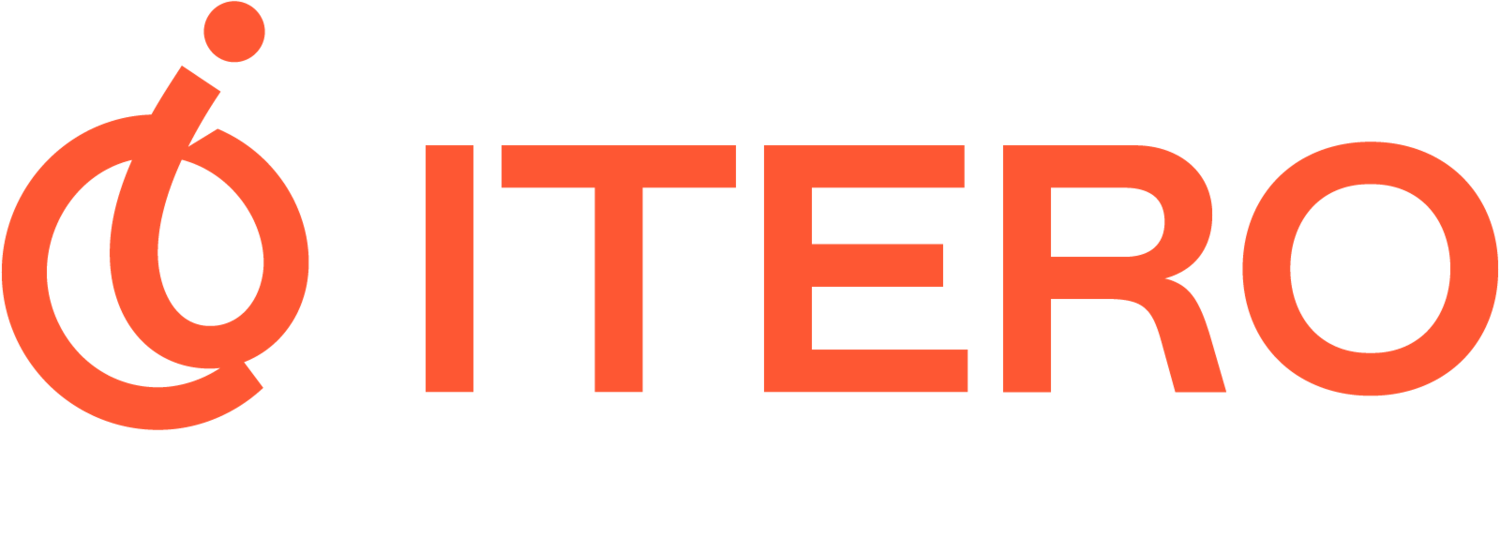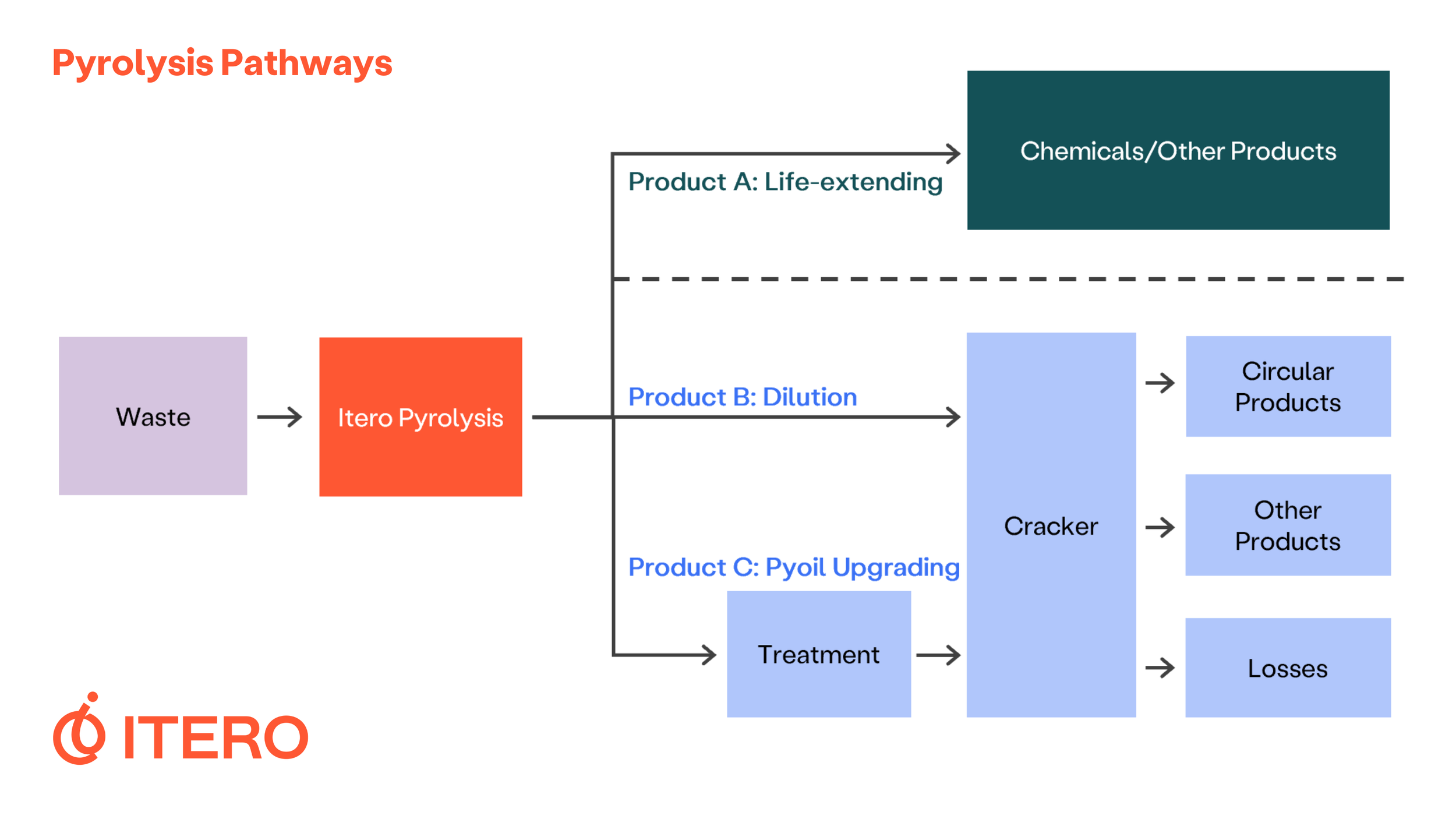Real-world waste and managing variability in Chemical Recycling
By Geoff Smith
Chief Technology Officer
Geoff leads the engineering function, focusing on technology design and development. He has nine years of experience in pyrolysis plant development and operation, in addition to experience developing novel cleantech solutions. Before Itero, Geoff held the position of Research Scientist at the National Physical Laboratory. He holds the CEng, MIChemE designation, as well as an MSci in Physical Natural Sciences from University College London
Originally posted in Sustainable Plastics.
Chemical recycling, a process that converts plastic waste into high-quality chemical products used to produce new circular plastics, is often caught between two “worlds”. One world of waste management, with error margins represented in percent, and another world of polymer producers, with specifications measured in parts per million. What we as chemical recyclers are left with, is dealing with high fluctuations in the feedstock going in, and narrow restrictions for the products that come out.
I have noted these two “worlds” during my time managing Itero’s technology and our pyrolysis plant in West London. We receive feedstock from waste managers with large fluctuations in specification, take it through our process, and produce a petrochemical product that answers to industry standards not originally designed for recycled content. While we have developed our technology to manage diverse waste, we must contend with real-world conditions. We arrive at the question: how can we work with our partners to achieve the greatest circularity possible, at the greatest scalability?
At present, many waste suppliers understand what chemical recyclers need in terms of feedstock quality. However, infrastructure is geared towards the needs of incineration. Often, we see feedstock with high fluctuations in levels of contaminants that are unimportant for incineration, but critical for chemical recycling. We are aware that this is a waste product, and we must deal with the complex realities of what consumers throw away. While systemic change is needed, change takes time, and we cannot hold off on the sustainable shifts needed today. So Itero, as chemical recyclers, must adapt to the feedstock currently available.
There are three pathways for pyrolysis products available to chemical recyclers (see above diagram): life-extending, dilution, or treatment. When delivering pyrolysis products to off takers, we contend with a legacy of infrastructure built around virgin rather than circular chemical products.
At Itero, we focus on the greatest possible circularity, rather than pathways to life-extending solutions, where plastics are recycled into products that have limited recycling possibilities. We therefore focus on the formulation of circular polymer products – this is through either ‘dilution’, or ‘treatment’. Dilution is where our pyrolysis oil product is fed directly into a naphtha cracker and is mixed with fossil-derived oils before it is transformed into new plastics. Treatment, or upgrading, is where pyrolysis oil is treated to improve its quality by removing waste-based contaminants before being cracked and made into new products. Due to the scale of crackers and the supply of pyrolysis oil, treated oils will still be mixed with fossil oils upon entry to the cracker. Via dilution, however, the oils are mixed without upgrading and the contaminants are 'diluted' to reasonable levels. Dilution is therefore limited to a low pyrolysis oil to fossil oil ratio, making it a limited solution as pyrolysis oil stocks and demand increase, while upgrading gives greater scalability into the future. At present, with the small supply of pyrolysis oil and the development of upgrading infrastructure, dilution is needed in many cases. We believe the future is in upgrading, and so this is our focus.
What is key to understand is that with all three pathways come restrictions needed for downstream equipment. Whereas the challenge for our waste feedstock is an infrastructure built for incineration, our challenge for our product is an infrastructure built for fossil-based petrochemical feedstocks.
How can we solve for these realities? To do this we must increase our understanding of our feedstock and our products, and how they interact through our process. One case study for overcoming these challenges is understanding the presence of chlorine throughout our process. Due to the nature of waste feedstock, we see high variability in chlorine content, arising from a variable amount of PVC, salt found in food products, and other sources like additives. At the same time, permitted chlorine levels are relatively low for pyrolysis oils.
To understand more about chlorine in chemical recycling, we started where we always start, gathering as much data and information as possible. We continually test our technology with different post-consumer and post-industrial feedstocks, and purposely cause ourselves problems so that we are prepared for and can avoid having those same problems at larger-scale plants.
Through our testing, we found that most chlorine in our products was concentrated in char rather than oil, potentially due to sequestration by chemicals such as calcium carbonate in the feedstock, or because it originates in forms that do not vaporise in our process, such as NaCl. Chlorine is therefore not a major risk to the quality of our product.
This may be the case for chlorine, but it cannot be said for other components and the only way chemical recyclers can effectively overcome real-world challenges is with constant testing, up-to-date information, and real-world experience. We return to the question: how can we work with our partners to achieve the greatest circularity possible, at the greatest scalability?
Alongside real-world applications of chemical recycling technology, we need to develop a new circular model of communication to match the circular flow of materials. Until only recently waste management companies spoke to recyclers, and recyclers spoke to petrochemical companies. There is room for improvement in shifting from linear communication models between direct upstream and downstream partners - especially in large companies where different departments might have less opportunity for cross-collaboration. We often find ourselves caught in the middle and “translating” between industries.
The Ellen Macarthur Foundation writes that to create circularity, we need to be “embracing new and previously unimagined connections … addressing the root cause, rather than just the symptoms” of waste. Circularity demands systemic changes that can only happen with the participation of all stakeholders in the plastic life cycle, and we need to find new avenues of communication and collaboration to do this.
Chemical recyclers working with diverse feedstock inputs and restrictive offtake specifications can continue to prioritise constant testing and real-world experience to create circularity. But we would ask, in kind, the sincere collaboration and consideration of the position of chemical recyclers in shifting from a ‘value chain’ to a circular ‘value loop’. To enable this, brands, waste management companies, and petrochemical companies need to develop new forms and directions of circular communication.



